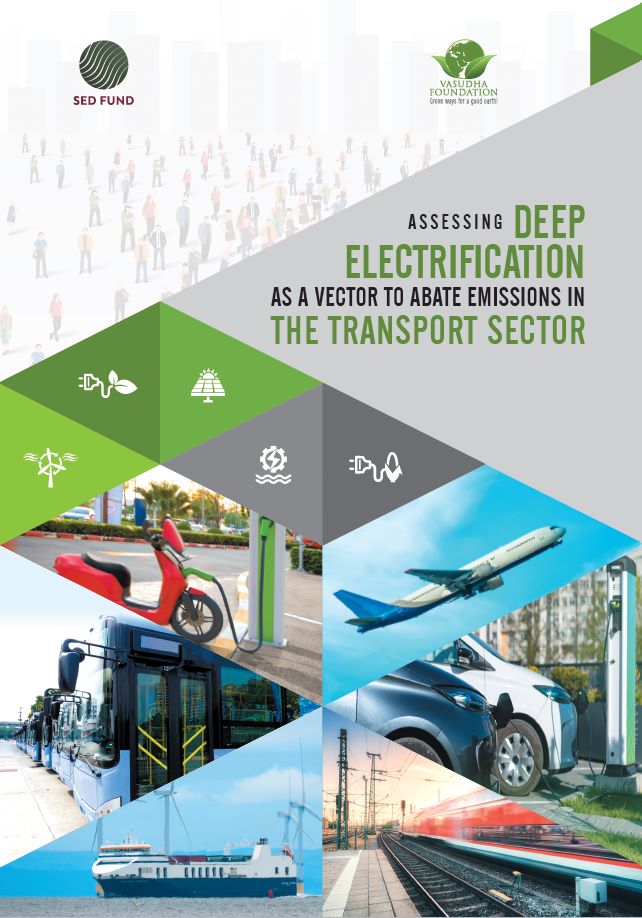The transport sector in India is one of the fastest-growing sectors in our economy estimated to grow at a CAGR of 5.9 percent1. It is also the third-highest emission-intensive sector in the country. According to a prominent emission repository in 2018, the transport sector accounted for 12.38 percent of total emissions arising from fuel combustion in the country2. In light of India’s updated Nationally Determined Contributions (NDCs) to reduce the emissions intensity of its GDP by 45 percent by 2030 (from 2005 levels) and achieve a 50 percent share of cumulative electric power installed capacity from non-fossil fuel-based energy resources by 20303, decarbonisation of the transport sector is critical.
Broadly, the transport sector in India can be classified into the following categories – Road, Railway, Maritime, and Aviation. Road transport is responsible for over 90 percent of the total energy consumption, thus prioritising it as a sub-sector for urgent decarbonisation. Also, the emissions intensity from road transport is concomitantly the highest as the majority of the sector continues to be powered by fossil-fuel based sources.
As India moves steadfastly towards incorporating a higher share of Renewable Energy (RE) in its power mix, electrification of the transport sector is viewed as a low-hanging fruit towards achieving sectoral decarbonisation. Further, an assessment that was conducted to determine the priority sectors for deep electrification identified the transport sector as receiving a high priority4. Deep electrification of the transport sector is to be viewed in two tranches – Direct and Indirect Electrification. Road transport has the potential to achieve 100 percent direct electrification, whereas aviation and maritime sectors can be decarbonised by adopting sustainable fuels produced through clean energy sources. Owing to this indirect form of electrification, they are aptly labelled as hard-to-abate sectors vis-à-vis decarbonisation. This report captures key insights into the process of electrifying the transport sector in India.
References
1 https://ficci.in/sector.asp?sectorid=22
2 https://www.ghgplatform-india.org/energy-sector/
3 https://pib.gov.in/PressReleaseIframePage.aspx?PRID=1847812
4 Vasudha Foundation Analysis





